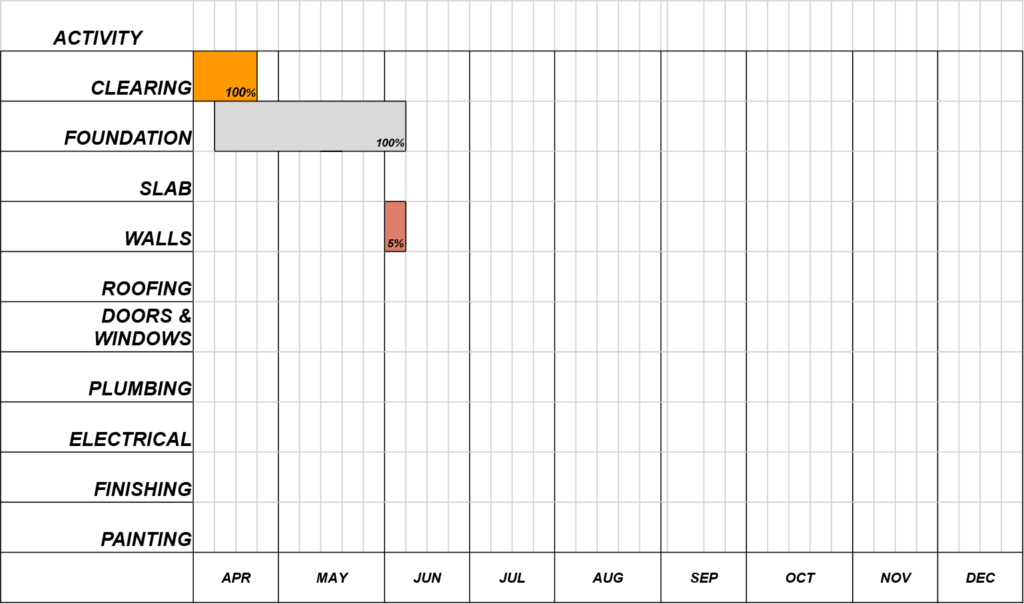Get in Formation: Update From Building Project in South Sudan
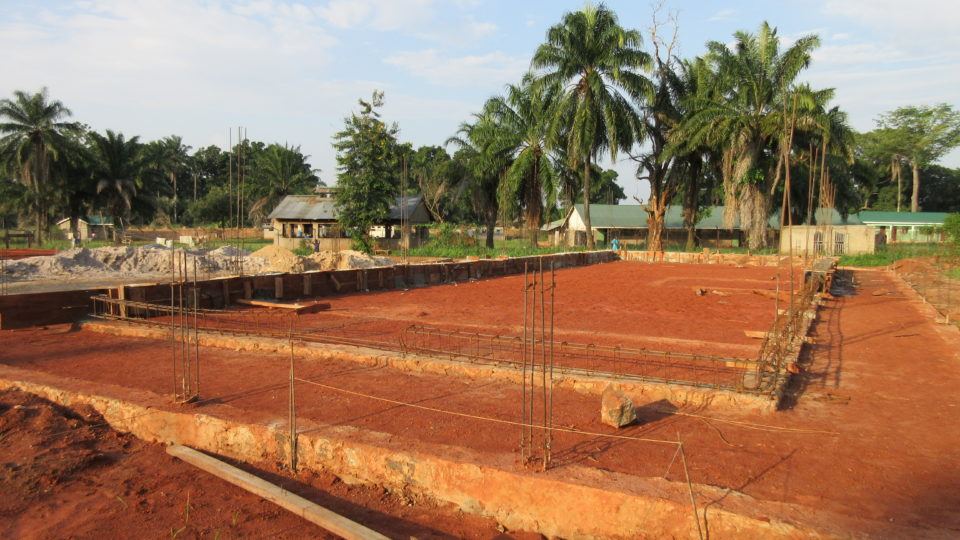
Aurora Fellow, Martin Rubino, is back with another update about the building progress at St. Theresa Hospital in South Sudan. In his previous update, Martin talked about the final steps on the foundation work. This week, Martin talks about setting up for the next stage of the project.
(Scroll down to the bottom for a handy glossary of terms)
Update: June 3-10, 2018
Even with a concrete mixer still in transit and the mechanical compactor back in Yambio for repairs, progress continues! The maternity ward has begun to rise from its foundations with the pouring of a reinforced beam as a base. Though still in its form work, we finally can get a sense of the building that will one day stand here.
Overview:
Form work was set and a reinforced concrete plinth beam was poured at the maternity ward. This will allow the brick masonry work to begin before the slab, even while compaction goes on. A delivery of rock made it possible for the final foundation wall of the Operating Theater to be completed. At both the surgical ward and the operating theater, the labor intensive task of hand compaction was carried out in the absence of the mechanical compactor. This, combined with a few heavy rains at night, has provided some good results. Timber has come in for the form work, but more rebar is needed for the reinforced beams that are to be set at the base of all outer walls. Deliveries of murrum soil, aggregate, and sand came in by truck.
Maternity Ward
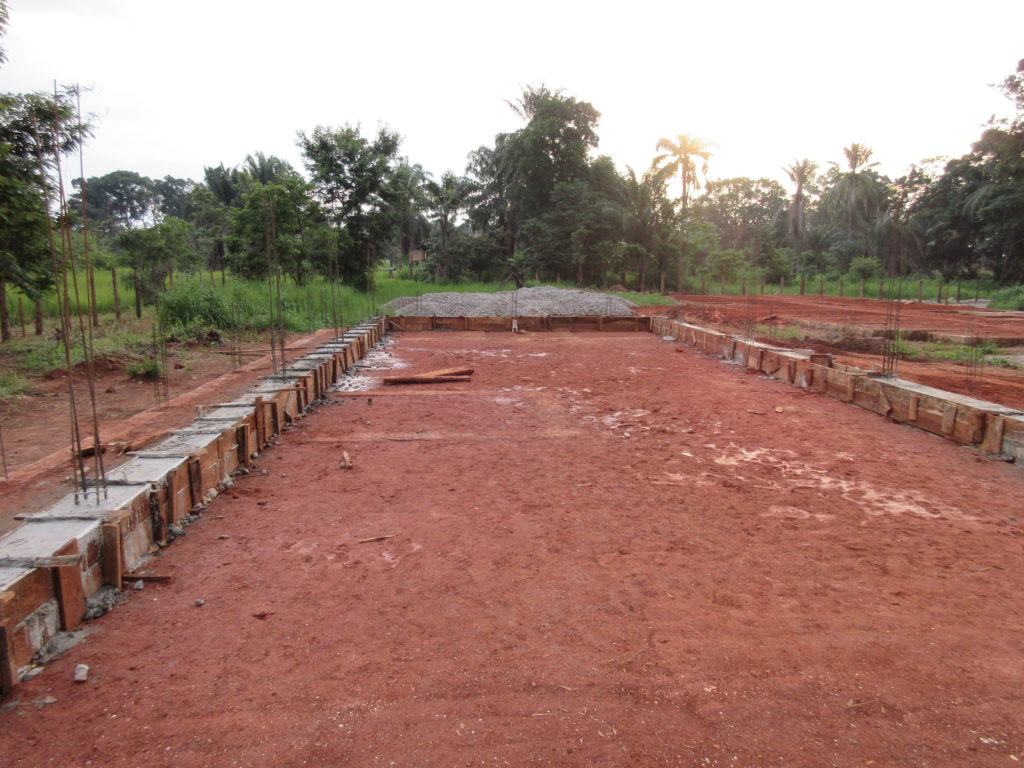
Forms were set around a cage of steel reinforcement before pouring a beam at the base of the outer walls of the Maternity Ward.
Surgical Ward
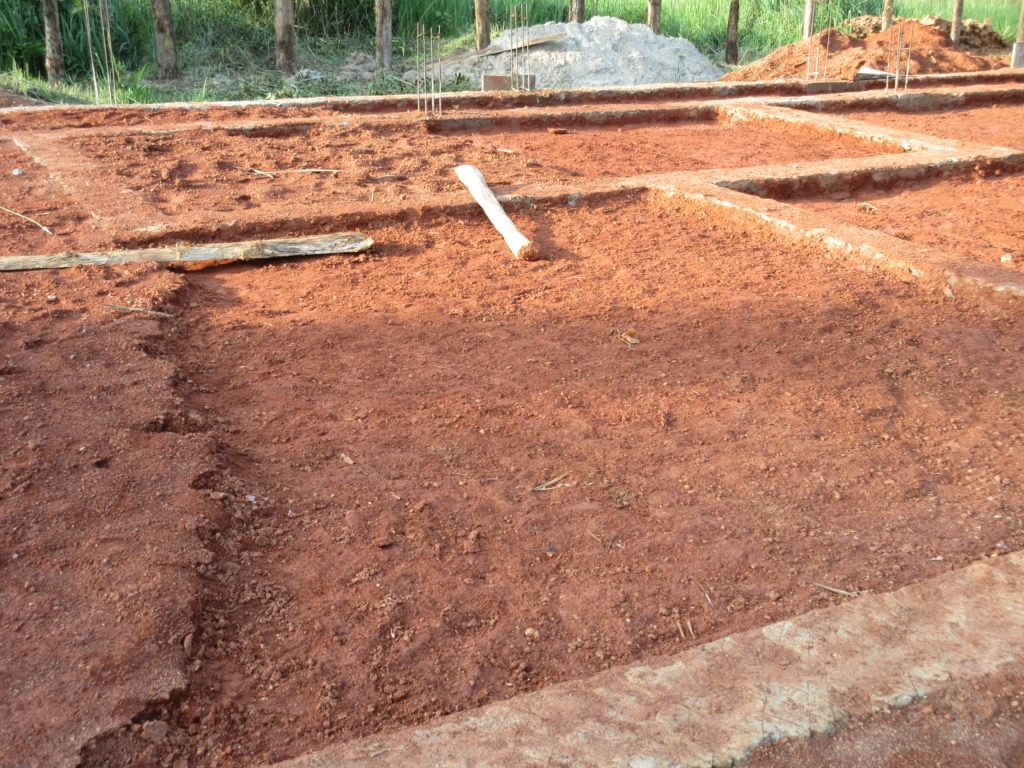
Compaction was done manually on both wings of the surgical ward. Rains have helped the process, but the mechanical compactor will be much appreciated when it is up and running.
Operating Theatre
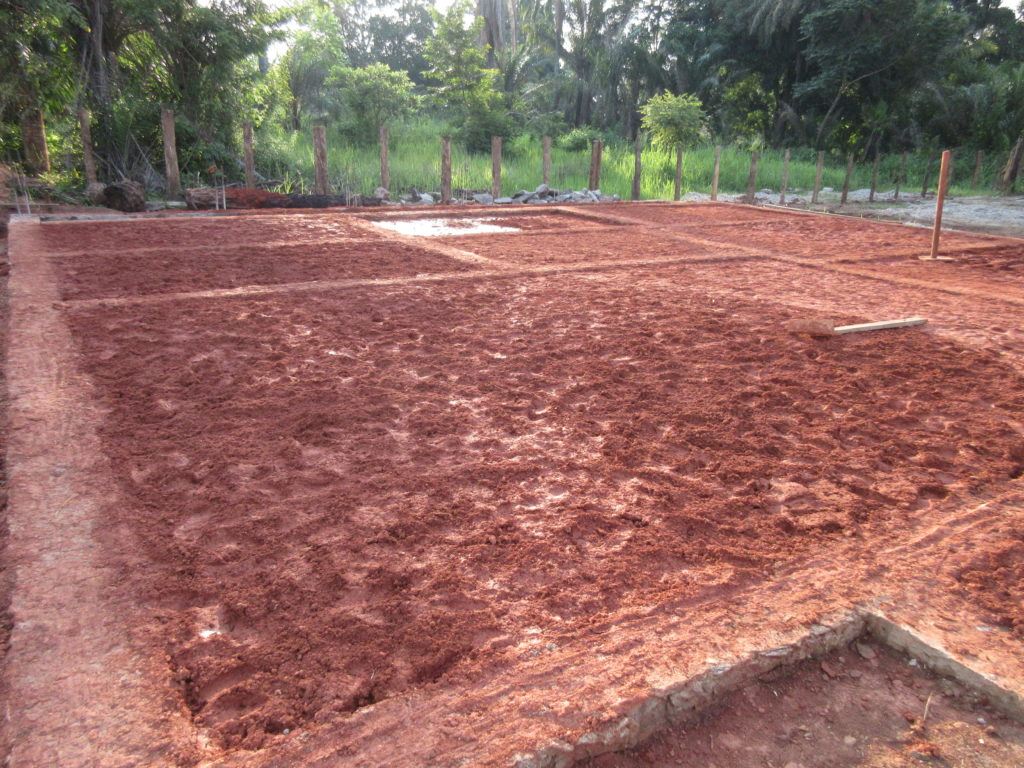
Foundations were completed by the masons this week thanks to a delivery of rock. Compaction was done manually, as it was for the Surgical Ward.
Construction Timeline
Glossary of Terms
- Compaction – An important process that increases stability in the foundation by removing small pockets of air in the soil. For this project, compaction must be done manually or with the mechanical compactor. Thankfully, rain can facilitate this process (think squeezing wet sand).
- Formwork – Much like a cake tin, formwork is essentially a mold made out of different materials like metals or wood so that concrete can be poured into the desired shape and structure.
- Rebar – Basically, rebar is a steel rod that is primarily used to reinforce concrete structures so that they can better withstand tension forces. There is a wide variety of rebar types, but all rebar has an uneven surface to help it stick to concrete.
- Reinforced concrete – As explained with rebar, reinforced concrete has steel embedded inside of it so that it can better withstand stress from sources like wind and vibrations. Concrete has natural compressive strength (ability to withstand heavy loads without cracking), but it needs the steel for full stability and security against pulling forces.

